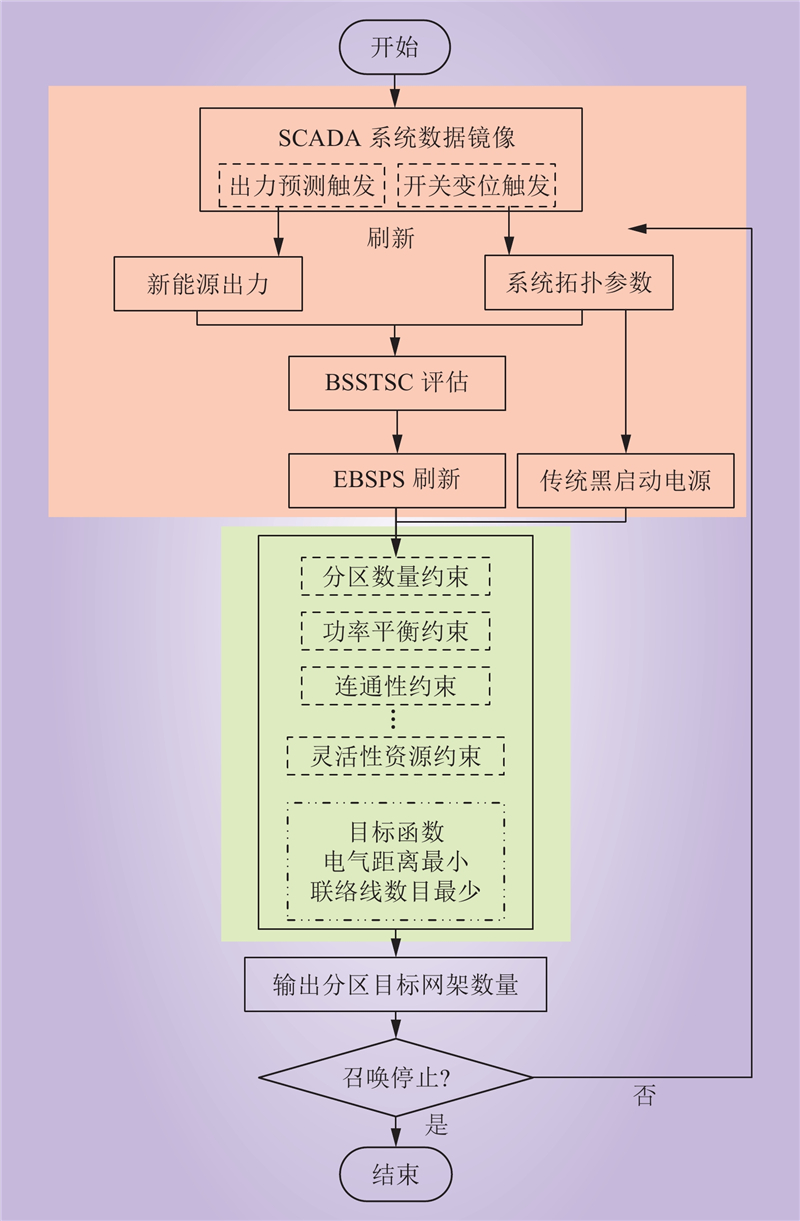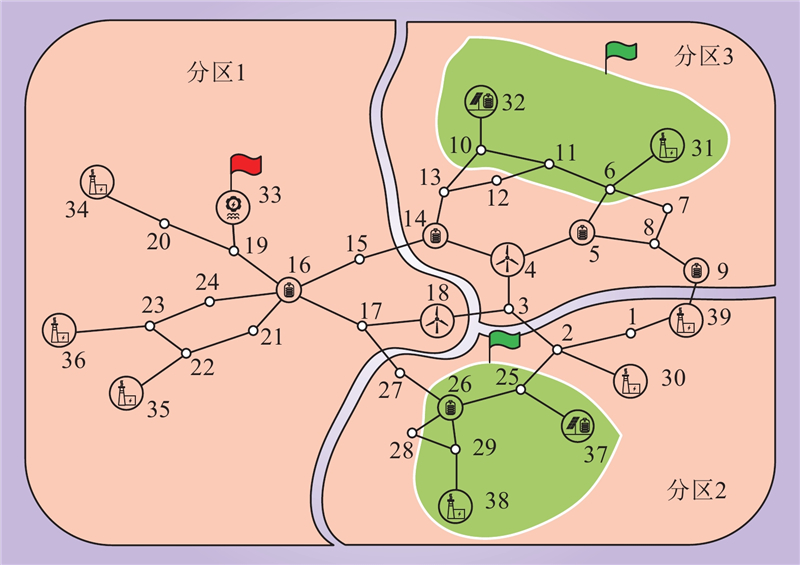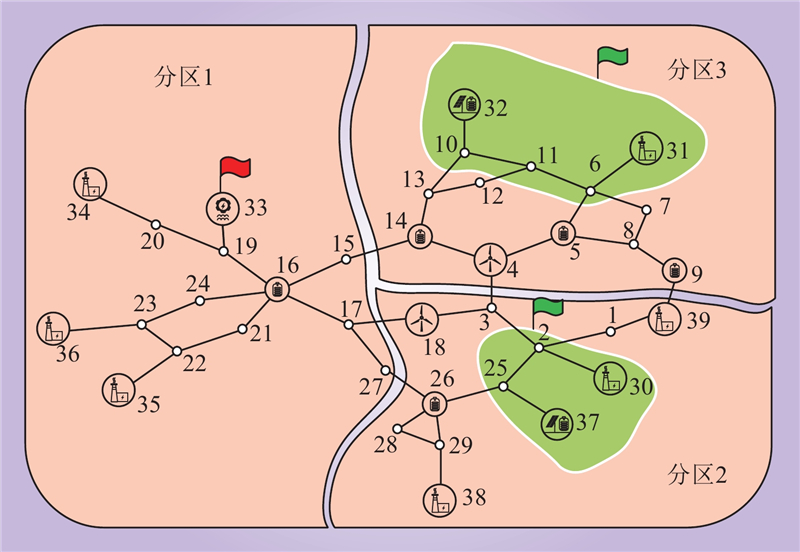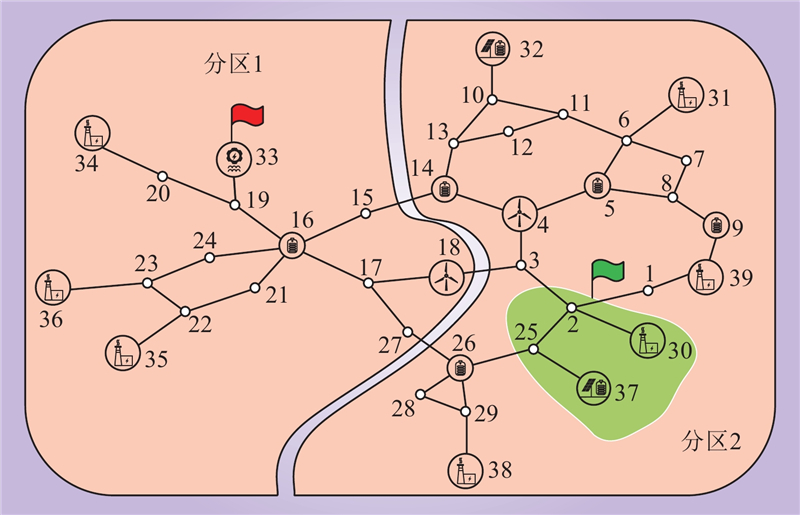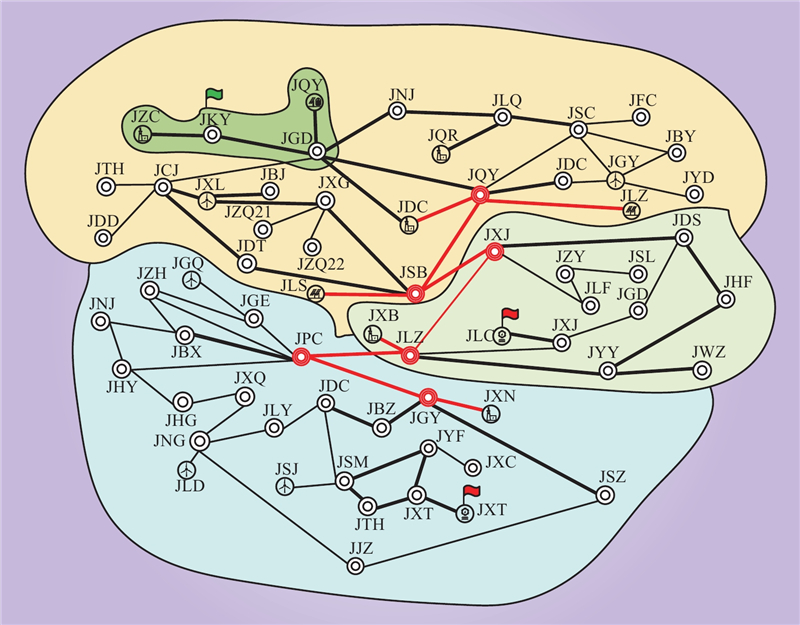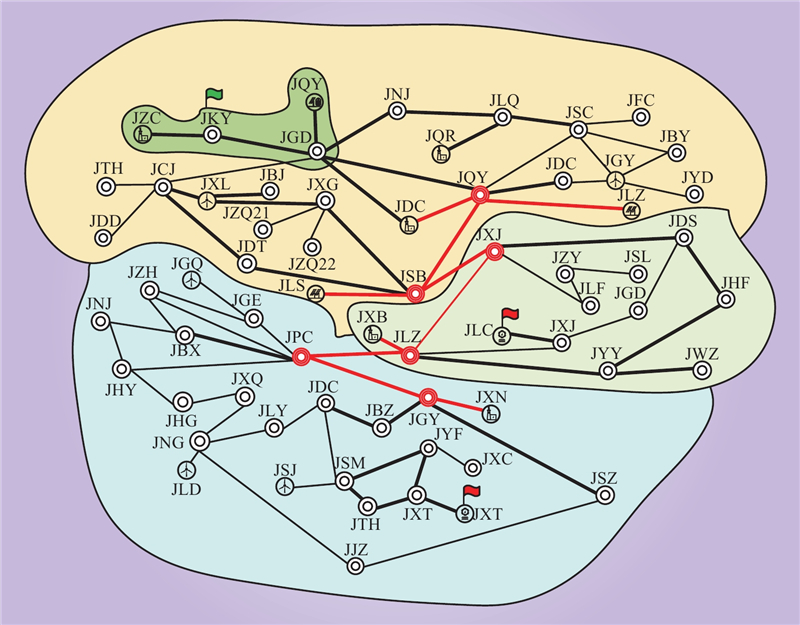| 1 |
刘之琳, 许传龙, 郑海峰, 等. 德国关停核电前后保供应促消纳经验分析[J]. 中国电力, 2023, 56 (10): 145- 152.
|
|
LIU Zhilin, XU Chuanlong, ZHENG Haifeng, et al. Empirical analysis of ensuring electricity supply and promoting renewable power consumption before and after the shutdown of nuclear power plants: the Germany case[J]. Electric Power, 2023, 56 (10): 145- 152.
|
| 2 |
杨珂, 王栋, 李达, 等. 虚拟电厂网络安全风险评估指标体系构建及量化计算[J]. 中国电力, 2024, 57 (8): 130- 137.
|
|
YANG Ke, WANG Dong, LI Da, et al. Network security risk assessment index system and calculation for virtual power plant[J]. Electric Power, 2024, 57 (8): 130- 137.
|
| 3 |
曹冬惠, 杜冬梅, 何青. 氢储能安全及其检测技术综述[J]. 发电技术, 2023, 44 (4): 431- 442.
|
|
CAO Donghui, DU Dongmei, HE Qing. Summary of hydrogen energy storage safety and its detection technology[J]. Power Generation Technology, 2023, 44 (4): 431- 442.
|
| 4 |
高崇, 张俊潇, 王天霖, 等. 考虑信息系统故障的开关与配电自动化终端多目标规划方法[J]. 南方电网技术, 2023, 17 (6): 44- 51.
|
|
GAO Chong, ZHANG Junxiao, WANG Tianlin, et al. Multi-object planning method of switch and distribution automation terminal considering information system fault[J]. Southern Power System Technology, 2023, 17 (6): 44- 51.
|
| 5 |
梁海平, 顾雪平. 基于谱聚类的黑启动子系统划分[J]. 电网技术, 2013, 37 (2): 372- 377.
|
|
LIANG Haiping, GU Xueping. Black-start network partitioning based on spectral clustering[J]. Power System Technology, 2013, 37 (2): 372- 377.
|
| 6 |
辛保安, 李明节, 贺静波等. 新型电力系统安全防御体系探究[J]. 中国电机工程学报, 2023, 43 (15): 5723- 5732.
|
|
XIN Baoan, LI Mingjie, HE Jingbo, et al. Research on security defense system of new power dystem[J]. Proceedings of the CSEE, 2023, 43 (15): 5723- 5732.
|
| 7 |
陈立征, 姚树国, 施啸寒. 考虑风偏闪络的电力系统故障场景仿真方法研究[J]. 东北电力大学学报, 2023, 43 (5): 53- 58.
|
|
CHEN Lizheng, YAO Shuguo, SHI Xiaohan. Research on power system fault scenario simulation approach considering wind deviation flashover[J]. Journal of Northeast Electric Power University, 2023, 43 (5): 53- 58.
|
| 8 |
LIN Z Z, WEN F S, CHUNG C Y, et al. Division algorithm and interconnection strategy of restoration subsystems based on complex network theory[J]. IET Generation, Transmission & Distribution, 2011, 5(6): 674.
|
| 9 |
刘昌盛, 谢云云, 石屹岭, 等. 加快含快速切回机组电网恢复的动态分区策略[J]. 电力系统自动化, 2017, 41 (19): 46- 53.
|
|
LIU Changsheng, XIE Yunyun, SHI Yiling, et al. Dynamic partition strategy for fast restoration of power systems with fast cut back units[J]. Automation of Electric Power Systems, 2017, 41 (19): 46- 53.
|
| 10 |
顾雪平, 周光奇, 李少岩. 计及系统可观测性的网络化简与黑启动分区方案制定[J]. 电力系统自动化, 2019, 43 (20): 114- 122.
|
|
GU Xueping, ZHOU Guangqi, LI Shaoyan. Network simplification and formation of black-start zone partitioning scheme considering system observability[J]. Automation of Electric Power Systems, 2019, 43 (20): 114- 122.
|
| 11 |
周光奇, 顾雪平, 马世英, 等. 基于整数线性规划的恢复子系统划分与分区方案的综合评价[J]. 电力自动化设备, 2019, 39 (1): 91- 98.
|
|
ZHOU Guangqi, GU Xueping, MA Shiying, et al. Restoration subsystem division based on integer linear programming and comprehensive evaluation of dividing schemes[J]. Electric Power Automation Equipment, 2019, 39 (1): 91- 98.
|
| 12 |
李婧斐, 黎琦, 罗萍萍, 等. 计及停电损失的电力系统黑启动分区策略[J]. 南方电网技术, 2022, 16 (3): 58- 66.
|
|
LI Jingfei, LI Qi, LUO Pingping, et al. Partition strategies of power system black-start considering outage loss[J]. Southern Power System Technology, 2022, 16 (3): 58- 66.
|
| 13 |
孙磊, 张璨, 林振智, 等. 大停电后电力系统黑启动分区的两步策略[J]. 电力自动化设备, 2015, 35 (9): 14- 21.
|
|
SUN Lei, ZHANG Can, LIN Zhenzhi, et al. Two-step strategy for black-start zone partitioning of power system after blackout[J]. Electric Power Automation Equipment, 2015, 35 (9): 14- 21.
|
| 14 |
顾雪平, 韩忠晖, 梁海平. 电力系统大停电后系统分区恢复的优化算法[J]. 中国电机工程学报, 2009, 29 (10): 41- 46.
|
|
GU Xueping, HAN Zhonghui, LIANG Haiping. Optimization of parallel restoration through power system partitioning after blackout[J]. Proceedings of the CSEE, 2009, 29 (10): 41- 46.
|
| 15 |
SUN L, ZHANG C, LIN Z Z, et al. Network partitioning strategy for parallel power system restoration[J]. IET Generation, Transmission & Distribution, 2016, 10 (8): 1883- 1892.
|
| 16 |
闫桂红, 李丹丹, 刘小恺, 等. 分布式调相机对大规模新能源直流送端系统的稳定特性影响[J]. 内蒙古电力技术, 2024, 42 (4): 80- 86.
|
|
YAN Guihong, LI Dandan, LIU Xiaokai, et al. Impact of distributed regulator on stability characteristics of large-scale new energy DC sending-end system[J]. Inner Mongolia Electric Power, 2024, 42 (4): 80- 86.
|
| 17 |
黄大为, 李子安, 孔令国. 台风灾害下提升电网韧性的实时优化调度策略[J]. 东北电力大学学报, 2024, 44 (3): 112- 120.
|
|
HUANG Dawei, LI Zian, KONG Lingguo. Real-time optimal dispatching strategy for improving power grid resilience under typhoon disaster[J]. Journal of Northeast Electric Power University, 2024, 44 (3): 112- 120.
|
| 18 |
EL-ZONKOLY A M. Renewable energy sources for complete optimal power system black-start restoration[J]. IET Generation, Transmission & Distribution, 2015, 9 (6): 531- 539.
|
| 19 |
刘艳, 季晨阳, 马艺瑄, 等. 基于生产可能性边界的含规模风电电力系统网架重构策略[J]. 电网技术, 2022, 46 (8): 2986- 2998.
|
|
LIU Yan, JI Chenyang, MA Yixuan, et al. Production-possibility frontier-based network reconfiguration strategy for power system integrated with scaled wind farm[J]. Power System Technology, 2022, 46 (8): 2986- 2998.
|
| 20 |
国家市场监督管理总局, 国家标准化管理委员会. 电力系统大面积停电恢复技术导则: GB/T 40613—2021[S]. 北京: 中国标准出版社, 2021.
|



